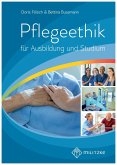This textbook fills a gap in education for licensed practical nurses (LPN), providing information specific to their own needs and concerns.
Firstly, it clarifies the leadership role of LPNs in the healthcare setting, and then identifies the knowledge, skills and abilities related to leadership, management, communication, culture change and person-directed care concepts. It also explains the efficacy of these concepts related to the LPN care of patients in the work setting and reviews the Nurse Practice Act (NPA) enacted in every US state.
LPNs play an essential role in the patient care team and we have to ensure they receive advanced education as practitioners in healthcare settings that reach vulnerable populations such the elderly. They have been considered as the registered nurses' right hand in acute care as well as many home-health settings. They provide basic medical and nursing care, ensure the comfort of patients, discuss health care with patients, and report the status of patients to registered nurses and doctors. But the LPNs are often expected to take on a real leadership role based on the perception that as licensed nurses they already have all the qualifications and education necessary for leadership roles. However, there is a gap in the education they receive and a limited body of literature dedicated to them. Written in honor of all LPNs, this educational textbook fills that gap. With learning objectives, review questions and scenarios, it is a valuable resource for courses for undergraduate students training to be LPNs.
Firstly, it clarifies the leadership role of LPNs in the healthcare setting, and then identifies the knowledge, skills and abilities related to leadership, management, communication, culture change and person-directed care concepts. It also explains the efficacy of these concepts related to the LPN care of patients in the work setting and reviews the Nurse Practice Act (NPA) enacted in every US state.
LPNs play an essential role in the patient care team and we have to ensure they receive advanced education as practitioners in healthcare settings that reach vulnerable populations such the elderly. They have been considered as the registered nurses' right hand in acute care as well as many home-health settings. They provide basic medical and nursing care, ensure the comfort of patients, discuss health care with patients, and report the status of patients to registered nurses and doctors. But the LPNs are often expected to take on a real leadership role based on the perception that as licensed nurses they already have all the qualifications and education necessary for leadership roles. However, there is a gap in the education they receive and a limited body of literature dedicated to them. Written in honor of all LPNs, this educational textbook fills that gap. With learning objectives, review questions and scenarios, it is a valuable resource for courses for undergraduate students training to be LPNs.
"This is an excellent resource on leadership for licensed practical nurses, an area that is often absent in their formal education. ... The overall use of tables, communication tools, studies, and current trends provides many additional resources to support licensed practical nurses who are caring for an aging population." (Carolyn N. Martin, Doody's Book Reviews, June, 2018)








